Abstract
Some substances seem to be much better at treating psychological trauma than others, even when they are seemingly similar in nature. We have reason to believe that 5-MeO-DMT is significantly better suited for this task than N,N-DMT (“DMT” from now on). In order to gain insight into why this difference exists, we investigate the phenomenological differences and similarities between the experiences produced by these two tryptamine psychedelics. In particular, we develop 9 lenses that show promise for understanding how 5-MeO-DMT and DMT differ:
- Space vs. Form: 5-MeO is more space-like than DMT.
- Crystals vs. Quasi-Crystals: 5-MeO generates more perfectly repeating rhythms and hallucinations than DMT.
- Non-Attachment vs. Attachment: 5-MeO seems to enable detachment from the craving of both existence and non-existence, whereas DMT enhances the craving.
- Underfitting vs. Overfitting: 5-MeO reduces one’s model complexity whereas DMT radically increases it.
- Fixed Points and Limit Cycles vs. Chaotic Attractors: 5-MeO’s effect on feedback leads to stable and predictable attractors while DMT’s attractors are inherently chaotic.
- Modulation of Lateral Inhibition: 5-MeO may reduce lateral inhibition while DMT may enhance it.
- Diffuse Attention vs. Focused Attention: 5-MeO diffuses attention uniformly over large regions of one’s experiential field, while DMT seems to focus it.
- Big Chunks and Tiny Chunks vs. A Power Law of Chunks: 5-MeO creates a few huge phases of experience (as in phases of matter) with a few remaining specks, while DMT produces a more organic power law distribution of chunk sizes.
- Integration vs. Fragmentation: 5-MeO seems to give rise to “neural integration” involving the entrainment of any two arbitrary subnetworks (even when they usually do not talk to each other), while DMT fragments communication between most networks but massively enhances it between some specific kinds of networks.
All of this together suggests that 5-MeO-DMT is better at helping you “reconnect with yourself” than DMT. And this may be key to treating trauma effectively.
What is Trauma?
I will start out by briefly mentioning an interesting property of psychological trauma. You see, trauma has a lot of somatic manifestations(Alexander 2019). Feeling disconnected from yourself, like you are full of blockages, that you have numb regions in your body despite no physical damage, and so on, are all quintessential ways in which trauma shows up in a person’s everyday life. Given these manifestations, do these suggest any new way of treating this? How about using something that facilitates the communication between parts of your nervous system that are not on “speaking terms” with each other? Would giving our nervous system a kind of vibration that simultaneously entrains any two of its regions to make them act as a unit be of any help?
Psychotropic Treatment of Trauma
Based on tens of interviews, hundreds of trip reports, and a literature review, I have arrived at a tentative short list of drugs that have the highest potential to heal trauma (in decreasing order):
- 5-MeO-DMT
- MDMA
- Ketamine
They are all synergistic combined with music, vibration, strobes, and olfaction. And when wisely used, they all have the ability to help you move on past pain: stop ruminating, stop feeling like your behavior is inhibited, and stop having panic attacks associated with your past experiences.
At some point in the future I will provide direct empirical evidence for the claim that these three substances are uniquely good for treating trauma. Arguably psilocybin, ayahuasca, and LSD can be helpful in processing traumatic experiences too. But my claim is that the options I listed are uniquely good at deeply resolving the issues at an emotional level and bringing to you the opportunity to feel a profound and lasting sense of inner peace.
DMT won’t help as much as 5-MeO-DMT.
MDA is not as good as MDMA.
And DXM, ok, perhaps it can also be quite useful for trauma… but ketamine has something “extra” that really helps.
What is this?
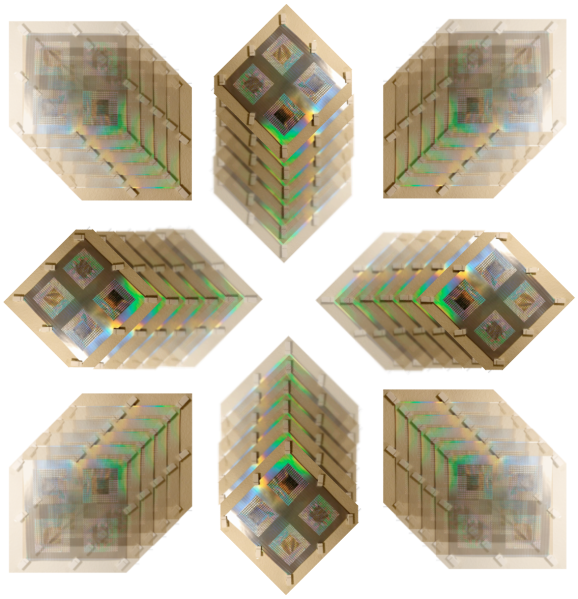
The Koan: 5-MeO-DMT, MDMA, Ketamine?
Perhaps we could gain a new perspective by framing this as a Koan: what do MDMA, 5-MeO-DMT, and ketamine have in common? You HAVE to the figure this out in the next 24 hours, or your guru will literally cut your cat in half. Motivated enough?
What do you do? Well, you start out by borrowing psychopharmacology books from the library. But does that help? When it comes to trauma, in traditional textbook neuroscience MDMA is at best just a footnote. Ketamine is not even mentioned for the most part, unless the book is hip, but even then it will be mentioned in the chapter about anaesthetics and painkillers; its psychoactive effects will be glossed over as “emergent phenomena”. No! What are you doing? Wasn’t John C. Lilly already talking about the far-out, extraordinarily bizarre, perhaps even literally inter-dimensional properties of “vitamin K” way back in the 70s? Then why is my 2007 “Drugs and the Brain” textbook so totally lacking in any kind of genuine phenomenological insight about this stuff?
And what about 5-MeO-DMT? You are lucky if the term appears even once in your $800 textbook. And if it does indeed appear, you can bet it will also be in a footnote, this time concerning matters such as “psychoactive animals”, “other tryptamines”, and “mesoamerican entheogens”. You will neither see 5-MeO-DMT mentioned in a personal identity philosophy textbook, nor in a neuroscience treatise on “neural synchrony”, nor in the part of academia focused on “innovation in the treatment of mental illness”.
It is sad to admit, but the official main-lined level of interest in the three most promising therapeutic tools for trauma listed above is a matter of sorting and assembling footnotes.
I am exaggerating a bit, of course.
MDMA’s therapeutic potential is gaining traction thanks to the tireless work of MAPS. S-Ketamine is now approved as an anti-depressant. And while 5-MeO-DMT is gaining popularity at a glacial pace, it is at this point by no means a secret. An increasing number of vocal members of the psychedelic community have been talking about 5-MeO-DMT for some years. People who have publicly emphasized how different five is from other psychedelics include Hamilton Morris, James Oroc, Martin Ball, Leo Gura, and Rak Razam. But what we still lack is rigorous scientific backing for these claims. After all, everyone is likely to want to sell their aesthetic preferences as universal truths about beauty and bliss, right? Thankfully, there are some early scientific indications already:
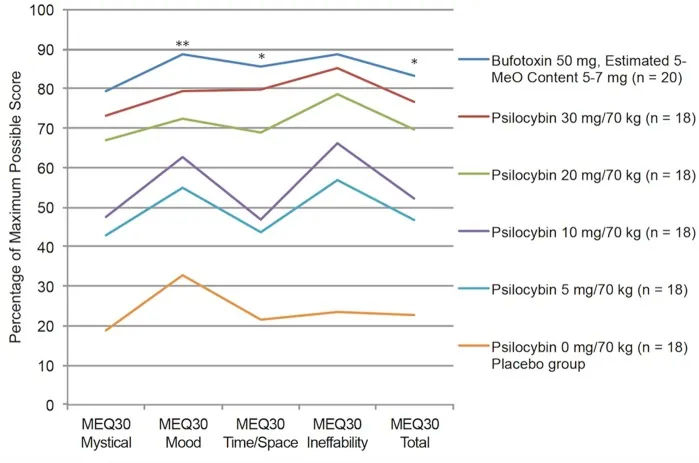 Reprinted from ‘Intensity of Mystical Experiences Occasioned by 5-MeO-DMT and Comparison With a Prior Psilocybin Study’.
Reprinted from ‘Intensity of Mystical Experiences Occasioned by 5-MeO-DMT and Comparison With a Prior Psilocybin Study’.
The above graph comes from a 2018 study(Barsuglia et al. 2018) that investigated the therapeutic effects of 5-MeO-DMT-containing toad venom relative to psilocybin. The dose used (the amount of buffo venom vaporized) had an estimated content of 5-7mg of 5-MeO-DMT, and the researchers classified 75% of the resulting experiences as meeting the criteria for a “complete mystical experience”. It measured people’s level of response with the Mystical Experiences Questionnaire (MEQ30), and as you can see from the graph above, in every category 5-MeO-DMT seems to be more powerful than psilocybin. The level of effectiveness was indeed found to be higher than all but the highest dose of psilocybin, and chances are that the study couldn’t show it was more effective than that because it was underpowered to detect it, and not because there is no difference (in other words, the sample size was not large enough for the difference between high-dose psilocybin and 5-MeO-DMT to reach statistical significance). Also bear in mind the key difference that the trip lasts under 20 minutes in total, meaning that even if the trip fails to produce full effects, you can still afford to try it again ten more times in the same time interval that it would have taken you to experience a full psilocybin trip. More so, it is important to point out that the dose of 5-MeO-DMT taken by the participants of this study is considered to be at the edge between “light” and “common” in PsychonautWiki’s entry on the drug1. Indeed, for many people the “breakthrough” tends to happen around 10mg, and I’ve heard of people using up to 30mg of it at a time. (Beware: if you ever try this – please don’t jump straight to a high dose, as this can cause serious trauma as a result.)(Masters 2005) Therefore, I think it is reasonable to expect that future studies will confirm what anecdotal data is currently screaming: that 5-MeO-DMT is more “powerful” and “mystical” in its effects than psilocybin, LSD, DMT, 2C-B, and all the rest.
But what this “power” and “mysticism” exactly amounts to still lacks clear and useful definitions. More so, is there any concrete reason why 5-MeO-DMT may be also superior at healing trauma relative to, eg. LSD or psilocybin? Technically, one could currently argue that since the presentation of “complete mystical states” is a mediating factor(Griffiths et al. 2008) in whether psilocybin has long-lasting psychological benefits, that 5-MeO-DMT is more effective simply because it has a higher probability of causing this effect. But I would argue that the texture of 5-MeO-DMT peak experiences is different and not only just more intense, and that the way in which it is different matters for its therapeutic value.
To investigate this particular difference, we now move on to examining the phenomenological difference between 5-MeO-DMT and DMT.
5-MeO-DMT vs. N,N-DMT: The 9 Lenses
My experience is that a reasonable ~20% of people I talk to who have a long-standing interest in psychedelics have heard about 5-MeO-DMT’s special properties. However, only a much smaller percentage of people have actually tried it. At Qualia Computing we have talked about its exceptional phenomenological properties a number of times. Yet it remains that most readers who reach out have not themselves experienced it. Hence I have not really had access to quality trip reports in order to say anything meaningful about the way in which it is different from DMT.
Thankfully, I’ve recently interviewed someone who has a decent level of experience with 5-MeO-DMT (20+ trips), along with a significant level of experience with vaporized DMT (100+ trips), and is also acquainted with the combination (10+ trips with both substances at once).
Given the incredibly intense psychoactive effects of 5-MeO-DMT (both for good and bad), most people struggle to put into words anything meaningful about the state. That said, as it has been the case with a number of other states of consciousness (e.g. LSD, DMT, and MDMA) I feel compelled to try to offer a sane, rational, agnostic, and pragmatic description of its phenomenology. In particular, I think that 5-MeO-DMT’s unique trauma-healing potential really deserves a close look. I believe that it sheds light on a wide range of topics of interest such as neural annealing, the Symmetry Theory of Valence, and the pseudo-time arrow (video). With this in mind, I inquired with my interviewee about the differences between N,N-DMT and 5-MeO-DMT. Together, after a lengthy open-ended discussion, we found the following ways to compare them:
Space vs. Form
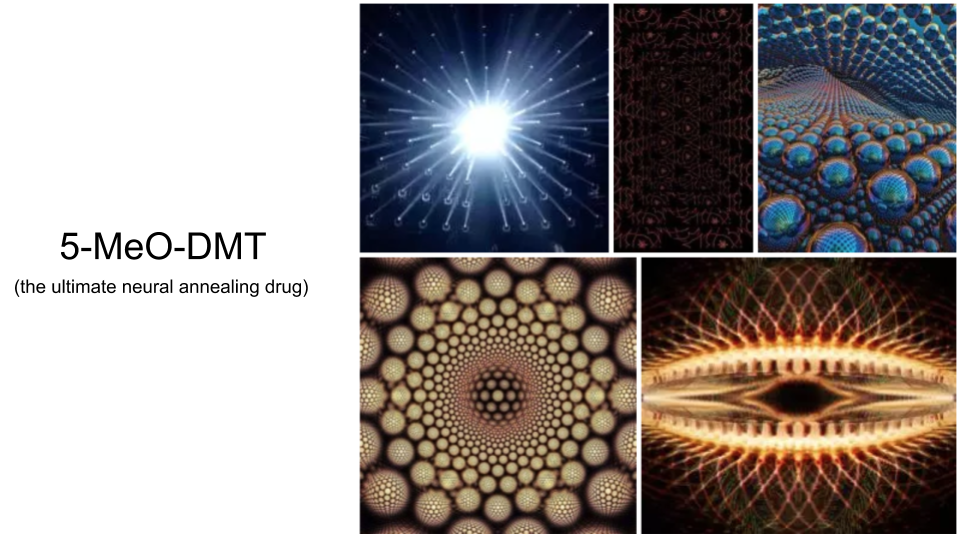
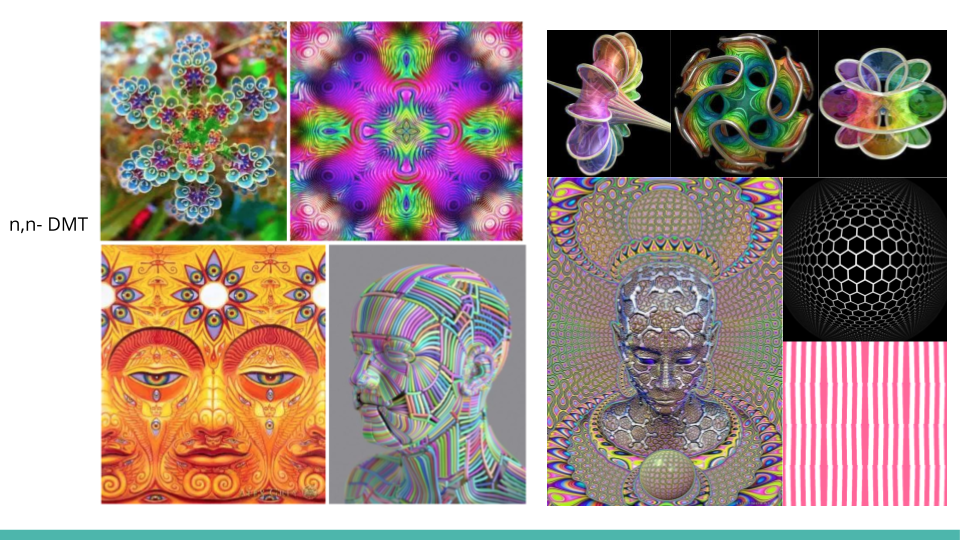
One of the first things that stands out when you take DMT at even small doses is the way in which colors get intensified. This is a special case of a very generalizable effect: in fact, every perceptual feature you can point to is enhanced while on DMT, from the sharpness of edges and pointy things to the feeling of movement and rotation. The interviewee indeed said that a brain on DMT “becomes a powerful qualia machine“.
After trying 5-MeO-DMT for the first time, most people already familiar with DMT mention something along the lines of “I was surprised that I didn’t see many colors.” The visual component of five is rarely very colorful; if color appears, it is in the form of a golden or sometimes light faint magenta or green hue. For the most part, the visual component of the experience is black and/or white. At times, one can see rainbow halos, but like rare subatomic particles, on 5-MeO-DMT rainbow colors come in and out of the vacuum, as if somehow equivalent to it. The bulk of the visuals manifest in a dazzling sense of spaciousness, as if there was a cosmic paint called “transparent/translucent”. The space often feels immeasurable due to a lack of a reference frame from which to make a judgement in terms of known comparisons. But what inevitably stands out is that the space seems large, uniform, harmonious, smooth, and luminous. Somatic feelings blend with this space, and the uniformity and symmetry of it allows for energy to seamlessly move throughout it. It really is a remarkable effect, one which can easily give rise to the felt-sense of Open Individualism. Yet, despite the engrossingly engaging character of these feelings, there is very little narrative complexity in sight.
Who knew that empty space could be so much fun? That you could fit so much love and bliss in an (experiential) vacuum? More so, the more you are able to relax into it, the more you embrace the waves of equanimity, the more you allow the space to become perfectly smooth and seamless… the more blissful it all gets!2
Crystals and Quasi-Crystals
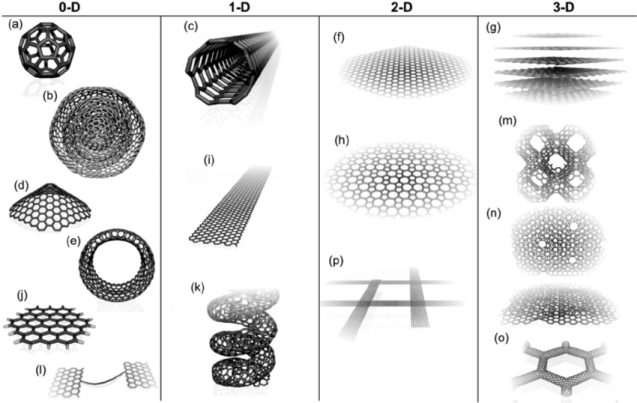
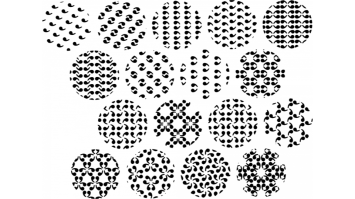

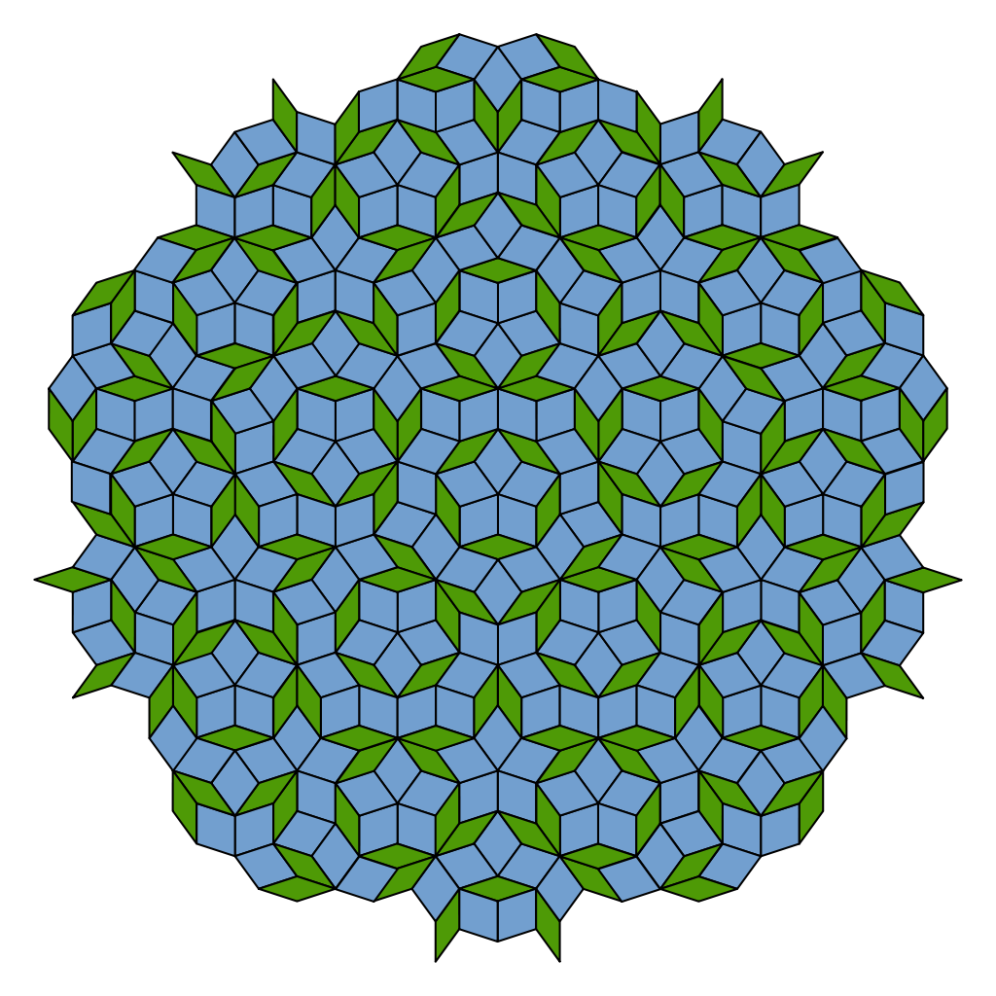
Here is an interesting thing – ultrasound has been used in order to bias the way in which water crystals form, and thus creating much more “cubical” water than is otherwise possible. More generally, the phenomenon of vibration affecting crystallization processes is worth considering as an explanatory framework. DMT comes with a particular vibe that some have identified as having a characteristic frequency somewhere between 20 and 30Hz(Kent 2010), whereas 5-MeO-DMT’s vibe seems to be a notch higher, perhaps in the range of 30 to 40Hz. On these drugs, your attention is jittered back and forth at a certain frequency, and this affects your ability to focus on any given part of your experience. The specific jittering itself makes it harder and easier to construct and manipulate certain thought-forms over others.
Speculatively, this model says that the jittering of attention caused by 5-MeO-DMT and DMT give rise to crystal and quasi-crystal building blocks, respectively, for phenomenal objects in one’s experience.
Phenomenologically, it seems that the vibratory signature of DMT effects doesn’t wrap around your experience an integer number of times. Thus, what we will call, for lack of a better term, the qualia crystals that form while on DMT seem to be inherently unstable and alien to your normal way of cogitating. The fact that the vibrations don’t fit perfectly in one’s experiential field forces it to bend out of shape to accommodate such vibrations. The result is constant chaos – fluid instabilities as the core effect.
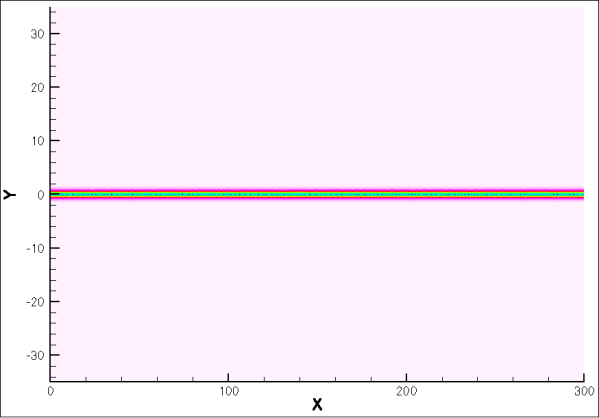
On the other hand, with 5-MeO-DMT, it’s as if the vibration activates parts of the field of experience in exactly the right way for them to blend, unite, and resonate with one another. The vibrations fit perfectly inside one’s experiential field, and allows it to relax into its own natural shape. And this allows for perfect crystals of awareness to peacefully grow, multiply, and synchronize.
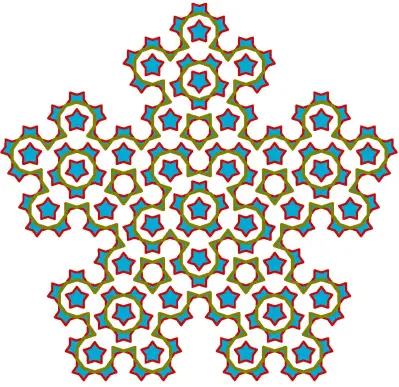
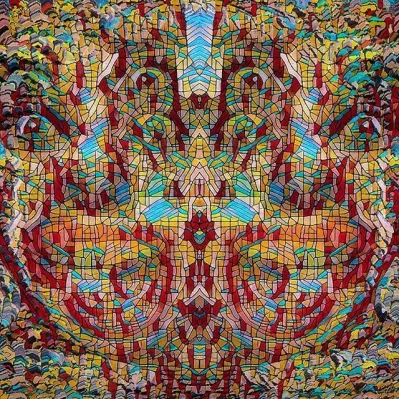
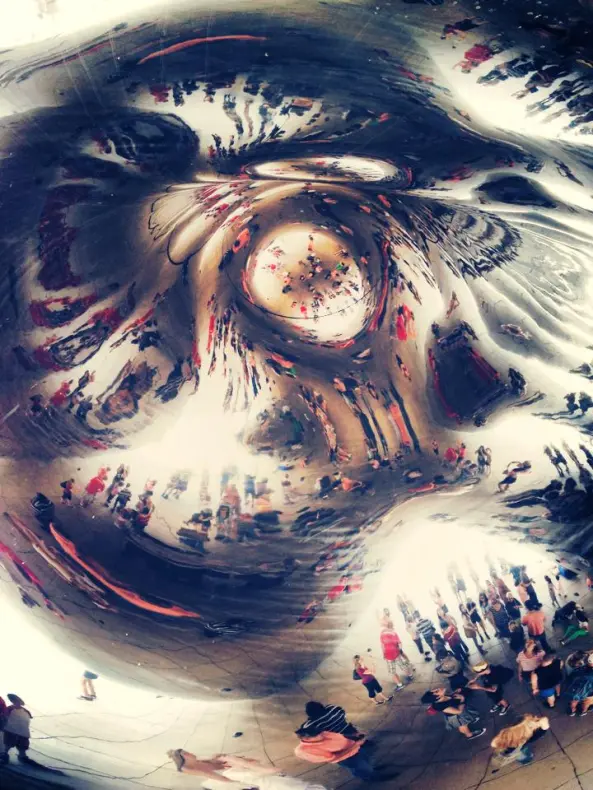
It is of course surprising that a tiny difference in the frequency of the vibe could have such large effects in the way phenomenology crystallizes. But this is true for other systems. When one talks about the complexity of shapes in resonant systems, for instance, Lissajou curves can provide a helpful intuition pump: in Lissajou curves, merely changing one of the frequencies by a small relative amount can result in a huge difference between the pictures drawn. From a simple circle to a complex mesh.
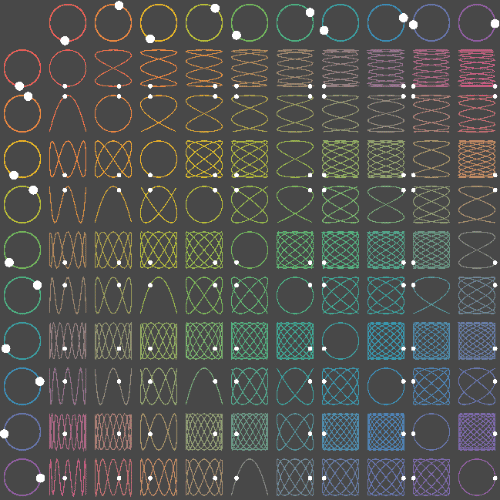
According to the interviewee, 5-MeO-DMT would neatly correspond to one of the simplest Lissajou curves above, while the DMT sensations would be better evoked by one of the meshy ones.
With that said, it is worth mentioning that 5-MeO-DMT is probably not hitting the right frequencies merely by chance. It’s probably more that it is activating a system whose attractor is self-correcting and results in the kind of symmetrical crystallization that gives rise to deep feelings of bliss.
Attachment to Existence and Non-Existence
5-MeO seems to point at a super general sense of “relaxation”. A meditation teacher, Ajahn Brahm, talking about jhanas said that his mantra to achieve states of deep concentration and peace was: “Relax… to the maaaaaaaxxxx…”.
And according to the interviewee, the thrust of 5-MeO is that it feels like your nervous system is paradoxically injected with a lot of energy and yet the vibe of this energy is that of total and complete- ultimate?- relaxation. But our body and mind are not used to relaxing deeply. The contrast between this energy and one’s usual neurotic state can itself produce a lot of dissonance and resistance. In most cases, this is transient and contained to the first couple of minutes of the experience, though in higher doses and with bad luck, it can also spiral out of control. On small and moderate doses the energetic vibe of “relax to the max” takes over one’s experiential center of mass and teaches the rest of your nervous system how to relax.
It vibrates your nervous system in just the right way that all of your tensions, and hidden knots, and internalized stresses, bubble up to the surface, and you have the chance to try to “unravel” all of that tension.
After taking it a couple of times, you get the very nice feeling of being OK with whatever happens. 5-MeO-DMT might be described as a drug that allows you to reduce “thirst, craving, desire” in a very generalized kind of way. In Buddhist terms, this would be to reduce “Taṇhā“, which comes in three different kinds: “kāma-taṇhā (craving for sensual pleasures), bhava-taṇhā (craving for existence), and vibhava-taṇhā (craving for non-existence).” While we are used to hearing religious figures and moralists talk about the importance of not experiencing cravings for sensual pleasure, popular culture still lacks legible myths about the craving for existence and non-existence. So it comes as a shock for someone who has never developed meditative introspective insight just how much of our suffering has the flavor of either craving for existence or non-existence. Dosing on 5-MeO-DMT gives you a glimpse for what a mind devoid of these more subtle forms of craving feels like.
DMT comes with a vibratory frenzy that directly causes a lot of knots and tiny stress points throughout your entire experiential field. And to a large extent, how the experience unfolds is the result of you trying to manage all of those knots and stress points to avoid having them accumulate and concentrate in painful ways. The effect of this is that DMT acutely increases attachment to existence and non-existence. You wonder “what am I in this world?” and then cling to it, along with an intense fear of losing yourself in the world of vibration. The fear is quite involuntary and primal. And because you are clinging to who or what you are, there is something that you can lose, and that contributes to the feeling that the stakes are very high.

On 5-MeO you look at a landscape- say a tree in a Savannah- and you can see it in the most Zen way you can possibly imagine (and I don’t mean cutting cats in half). You think: “there is neither someone nor nobody in there” and “it’s all just arising and passing of ephemera”.
On DMT you look at the same landscape and you feel: “Oh gosh, what AM I in here? Am I that rock over there? That rock seems threatened by erosion! Am I the tree? But what if something comes and eats the tree?” and so on.
On DMT you feel like you are one of many little beings in a vast ecosystem. On 5-MeO-DMT you step back and you “realize” that you are the entire ecosystem.
In turn, this may explain to some extent the fact that the content of DMT hallucinations is often filled with exotic beings. And almost always, these beings have hyper-specific ways of life, tastes, intentions, and beliefs. The realms you experience on DMT are all saturated with attachment to existence and non-existence, and the beings you interact with are no exception. In fact, they may be a manifestation of those intensified cravings! From the interviewee:
“I’ve taken DMT about 100 times and have encountered many different vibes and kinds of intelligences in those realms. I’d love to map out the possible narratives – there are so many! Loosely speaking, I’ve had many different encounters with intelligent beings: from blissfully angelic and benevolent to outright demonic. Most of the beings I’ve encountered are somewhere in-between, and for the most part, tend to have pretty dualistic mindsets.
There is this whole class of beings I’d identify as harlequins/jesters that just love to play tricks with perception (I’m sure that’s what Terrence McKenna was pointing at).
Then there are “artists” which have a particular style that they explore and can range from emotionally self-sufficient to aggressively in-your-face about their work. The “look at THIS and look at THIS and look at THIS!!” kind of stance, where you are not given enough time to process what they’ve already shown you before they thrust even more stuff into you, and then attach ‘cookies’ into your etheric body to track you in future trips so you “like” and “subscribe” to their “interdimensional channel” or something like that.
There’s also a lot of beings that seem to want to tell you that they are confident that God does not exist and that “everything is allowed”. And I’ve felt that they are really indifferent to morality, but still have powerful abilities and unique qualia of a more scientific bent.
I once also encountered what felt like a true sadistic demon that played some really nasty tricks on my perception, and filled me with “etheric bugs” and had hundreds of little minions to attack me in many unpleasant ways. That said, I blame this on the fact that I was sleep deprived when I took DMT that one time, and it’s never happened before or since. But that experience gave me a lot of respect for the drug.
I’ve also encountered realms where they actually do consciousness research as such, and are benevolent and into engineering paradises. I even asked one of them if they knew my favorite philosopher, and they said “yes, what a nice fellow – we hope he will be more widely known in the future. We just wished that he wasn’t so sad a lot of the time.”
I have found that my pre-existing mood is the single most important variable that determines the kind of intelligences I encounter. So I’d really like to someday try MDMA and DMT combined. I suspect those would be very angelic beings most of the time.
Interestingly, I feel that while DMT feels profoundly spiritual, to a large extent it is less “nondual” than most other psychedelics. A lot of beings I’ve encountered simply don’t seem to care about oneness at all. But on LSD, mushrooms, and of course 5-MeO-DMT, the Golden Rule seems to play a very central role in the experience. Those experiences are much more of a “teaching” than the wacky stuff one encounters in the DMT realms.
When you take 5-MeO-DMT and DMT at the same time, you can really feel the contrast between the dualistic “us vs. them” vibe that underlies DMT and the unitive sense that underlies 5-MeO-DMT. I’ve experimented with the combo and found it to be super informative. And usually, I realize that while DMT turns your brain into a high-octane “qualia machine”, 5-MeO is in fact much more peaceful and happy in a deeper sense. I’d like to understand both, but my preferred “home” would be for sure the 5-MeO realms.”
Underfitting vs. Overfitting
One interesting lens with which to make sense of the difference between people who are open to experience and people who are not is that of model complexity, which casts this difference in terms of the statistical concepts of underfitting and overfitting.
Having narrow views, simple explanations, and enduring preferences is very good when the world itself is either very simple or impossible to understand. But having complex views, multi-layered explanations, and flexible preferences is more adaptive than the alternative in a world that is both complex and can be understood with some effort.
Indeed, some speculation about the nature of sleep from the predictive coding paradigm of cognition is that dreaming is a process of model complexity reduction(Kirov 2016). The information that we accumulate over the span of a day is incorporated in an ad-hoc fashion while awake, and only properly integrated (and pruned) after a good night’s sleep. This at least provides the theoretical precedent for describing a specific state of consciousness in terms of its effects on model complexity. And here we would propose that as a very general effect profile, 5-MeO-DMT reduces model complexity while N,N-DMT increases it.
As a consequence, we would posit that people who take five a lot will converge towards compelling yet over-simplified models of realty, whereas people who use DMT a lot will converge to overly complex and unnecessarily detailed explanation for even the simplest of phenomena.
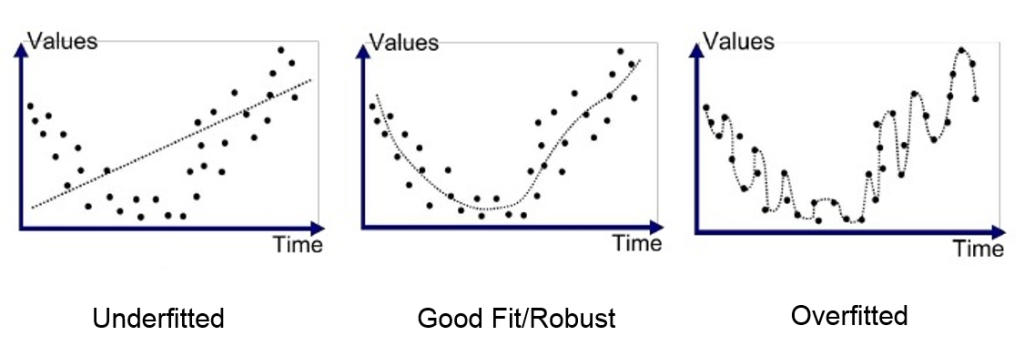
Perhaps in the future people could be diagnosed as chronic overfitters and underfitters. In turn, these two drugs could be given by prescription, for the maladies of improper model selection practices:
N,N-DMT would be given to the sufferers of too much worldview simplicity. People like this believe that the world is dominated by the struggle between capitalism and communism. They think that there is a 50% chance that God almighty exists. They assign zero probability to unlikely events, such as lizard people power conspiracies. In people like this, DMT is a powerful mind enhancer capable of challenging cartoonishly simple background assumptions and introducing a healthy dose of skepticism in mainstream narratives.
5-MeO-DMT would instead be given to people who are overwhelmingly embroiled in complex interpretations of the nature of reality. Whether it is in the realm of conspiracy theories, religious cults, the biochemistry of aging, or any such hopelessly convoluted field of research, a little five will unscramble the mind of the compulsive overfitter. Thanks to the drug, the Bayesian puncture, the Occam’s cut, and the pragmatic so what coalesce into a decimating hit to the load-bearing hub-nodes that feed unfalsifiable belief systems. The model complexity reduction effect dissolves entire subfields, assimilates clusters, and seamlessly mends discontinuities in the reality mappings of the patient. At moderate dosages and treatment regimes, the sufferer recovers fully. The sufferer often ends up healed of their traumas, and occasionally healed of many more things than expected. At levels much above those of the therapeutic standard of care, there is a risk that the treatment may result in the healing of the fundamental traumas of conscious experience. The drug may offer the patient a chance to relinquish phenomenal reality in exchange for an extemporal “ultimate relief”. To extinguish the flame of existence, as they say.
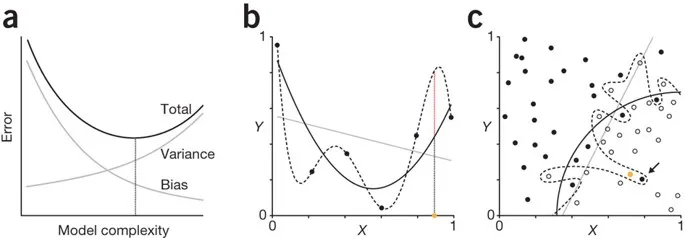
Importantly, after 5-MeO-DMT therapy, the patient is, let’s say (for the sake of speculating), 20 times as likely as members of the general public to say yes to questions like “Are we all one consciousness?”, “Is the world a process created for the refinement of our souls?” and “Is the universe made of infinite consciousness?”.
So where does that leave us? The good news is that this may have game-theoretical benefits for the side of consciousness in the eternal battle between consciousness and pure replicators. The bad news is that it can overwrite important information obtained from the senses, one’s education, and logical reasoning:
Becoming the God of “I-AM-Now-ness” and filling your entire experiential field with that flavor of awakening is a recipe for ecstasy, not for good epistemology.
Indeed, the patient may become a bit hooked to the simplification of their model complexity; to make reality as they know be replaced by a simpler, yet more intense, version of perceived reality is very tempting. It can be seductive to embrace a view like “you are God and you have created everything for your own amusement” or “you are the dream of God”. Rather than compassion, why not indifference? Being the “way God entertains itself” is both poetically satisfying and super trippy. A lot of people would find that such belief adds some spice to their lives.
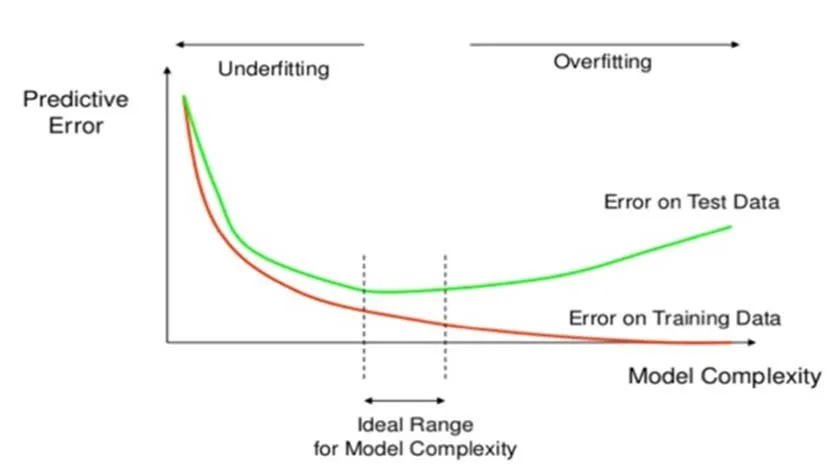
But the price of truth is everything. In turn, it would be ideal to complement any model complexity reduction that goes too far with a healthy amount of prediction errors(Wiblin and Harris 2019).
Fixed-Points and Limit Cycles vs. Chaotic Attractors
The brain contains many self-correcting feedback systems. Psychedelics in general can be modeled as drugs that mess with the inhibitory component of excitation-inhibition feedback systems. They accomplish this, quite possibly, by disrupting the inhibitory serotonergic connections coming from the cortex that gate the excitatory input coming from the thalamus. This may account for why tracers look the way they do – the failure to inhibit the thalamus results in looped replays of recent states. This may go a long way in explaining why people find “video feedback” so trippy and fascinating. Namely, because a lot of psychedelic effects can be understood as feedback getting out of control, literally.

More concretely, at the Harvard talk on the Hyperbolic Geometry of DMT experiences I introduced this notion that each DMT experience as a whole can be thought of as a trajectory in the energy vs. complexity landscape. Here, the vertical axis indicates the degree of energy of the experience (roughly corresponding to the intensity, brightness, and amount of qualia), while the horizontal axis represents how much information is encoded in the experience. One interesting operationalization of information is through the concept of symmetry breaking3, in which case the horizontal axis approximately tracks the “distance from perfectly symmetrical spaces in terms of number of symmetry breaking operations”.
I then postulated that we could generate an ontology based on feedback + noise to explain how two DMT trips of roughly the same level of intensity can nonetheless contain very different amounts of information.
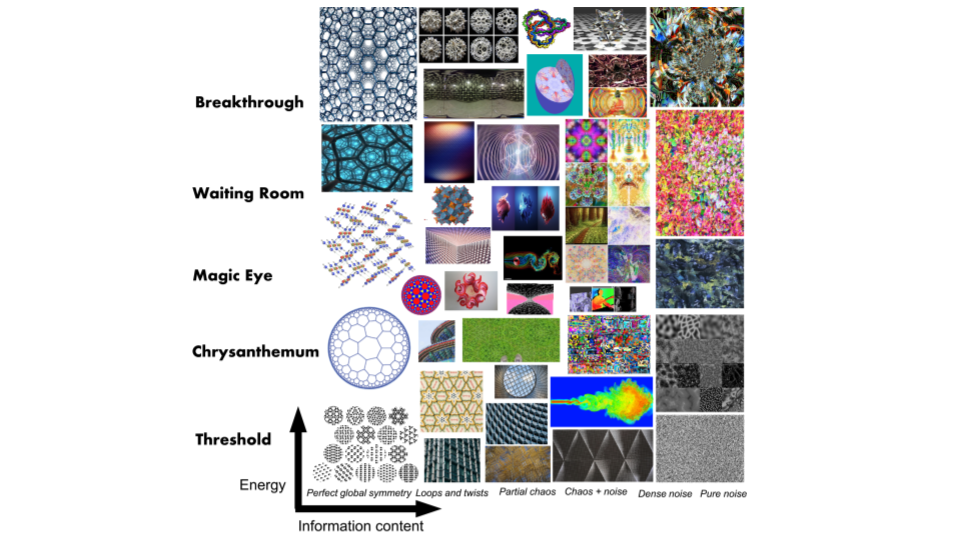
What I did not mention at the time was that while DMT does have the ability to send you to any place in the energy-complexity landscape, most of the experiences are in the region of middle-complexity. In fact, especially strong DMT trips tend to become fully chaotic, so there is even a mild correlation between dosage and complexity. On the other hand, 5-MeO-DMT tends to propel you towards the low-complexity region of the space.
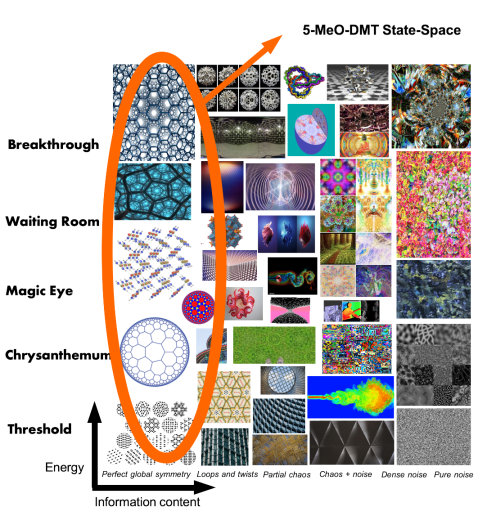
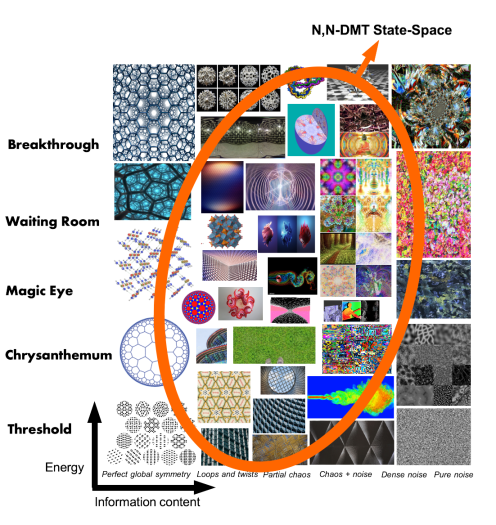
Using a feedback system ontology we could thus posit that 5-MeO-DMT modifies the feedback parameters of your brain in such a way that the states it gives rise to are ether fixed points or short limit cycles:
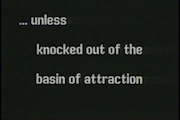
The video above depicts a fixed point (as with the other animations below, I took this from an old 1984 video about video feedback you can see here(Crutchfield 1984)). A fixed point is a configuration of the system that is stable upon feedback iterations. In the video above we see a fixed point consisting of a cross (presumably the result of the camera having a 90 degree tilt) that is then perturbed and eventually collapses into just a single circular dot at the center.
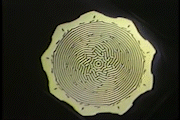
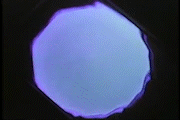
The above are limit cycles. The first (left) is a comparatively simple limit cycle in that every stage along its reproduction cycle is very similar to each other. The second (right) one is a bit more complex, yet despite a long winded path, it really does repeat more or less perfectly over and over. 5-MeO-DMT limit cycles are more akin to the one on the left, but on occasion may be a bit more complex and rhythmic over the span of seconds. Either way, there is often a strong pull towards a simple resonant pattern with remarkable stability.
Contrast that with chaotic attractors:

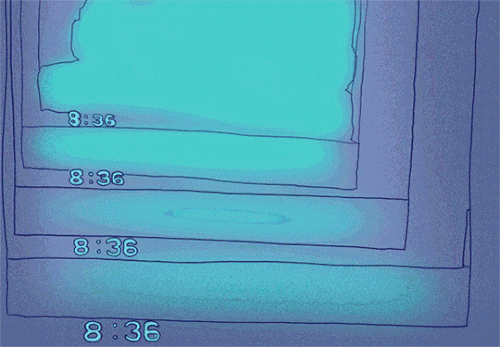
When we have actual chaos, the states continue to change indefinitely. We could then posit that DMT’s characteristic jittering seems to prevent the formation of stable fixed points or short limit cycles. Despite both DMT and 5-MeO-DMT disrupting feedback in the brain, the subtle differences in the way parameters of this feedback are modified can make all the difference between perfectly simple and smooth results and the endless generation of chaotic structures.
Modulating Lateral Inhibition
Another exciting lens with which to look at the difference between these psychedelics is by allusion to lateral inhibition: according to a couple of recent trip reports I received from another anonymous source, there is a remarkable difference between the tracers of 5-MeO-DMT and those of DMT. In particular, the anonymous tripper points out that DMT tracers are chains of concatenated positive and negative after-images of the stimulation source, whereas 5-MeO-DMT only produces positive after-images.
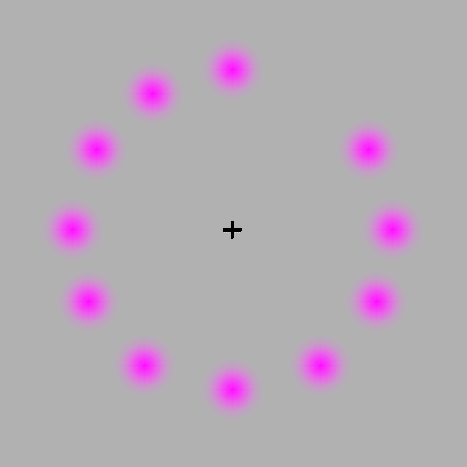
In other words, when you see a blue ball moving on a screen, on DMT you will see tracers of that ball that change in color from blue to yellow to blue again and so on, all following after the original blue ball. But on 5-MeO-DMT, one will only see a long blue tracer. This is a remarkable difference, and if true, it would seem to be an important hint4.
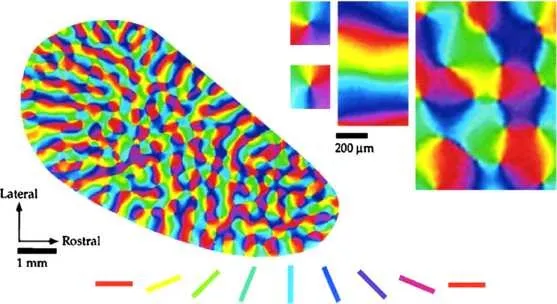
Lateral inhibition in the cortex prevents the overlapping of incompatible features in one’s own experience. For example, the primary visual cortex shows a map of orientation selectivity as shown above. Each hypercolumn is selective to only a specific orientation, and the surrounding hypercolumns are selective to different orientations. More so, via lateral inhibition, when a hypercolumn is activated, it inhibits the surrounding ones.
In this model, DMT would perhaps leave this process untouched, so that when the brain is massively energized, it still maintains this flip-flopping between each feature and its complement. Indeed, some people have described DMT as turning half of your neurons fully on, the other half of your neurons fully off, then inverting the activation so that the off neurons are turned on and the on ones are turned off, and flip-flopping between these two steps many times per second. Could this be the phenomenal expression of having energized checkerboard patterns of excitation and inhibition saturating your cortex? That is, taking a system with in-built lateral inhibition into over-drive?
5-MeO-DMT, on the contrary, seems to allow for “all colors to blend together into pure white light”, and “the past and the future to collapse into the present”, and the “self-other distinction to be dissolved”, and so on. Intuitively, if the drug is biochemically disabling lateral inhibition, that could be reflected as a profound sense of unity and interconnectedness at the phenomenological level, “transcending every last barrier”.
Diffuse Attention vs. Focused Attention
As we mentioned earlier, DMT tends to come with a feeling of “becoming tense” while 5-MeO-DMT has a primary vibe of “becoming relaxed”. One way in which we can model this is in the way the drugs influence whether your attention is focused or diffuse. Now, I should say that this model will be necessarily incomplete because at the peak of a 5-MeO experience one often does in fact feel super focused in some way. But I would posit that this sense of focus is much more holistic than the way our common-sense use of the term would suggest. The focus on DMT, on the other hand, does feel very much akin to the “conventional” sense of focus, where you are able to precisely position figure and ground in such a way that they have as much contrast as possible.

In a way, the beings one encounters on DMT could be thought of as “attentional attractors”. As you create a lot of little focal points during the experience, these begin to build up and define the contents of your mind. Each focal point makes it easier for you to create another one nearby. This snowballs into an effect where there are clusters of focal points that become the “centers of mass” of the narrative. These could very well be what underlies the “beings” on DMT. Using Buddhist terms again, DMT beings might perhaps be thought of as exotic “nimittas“: attention hubs.
Also, because the experience is high-dimensional and changes your sense of what “understanding” even means, it seems that the feeling of super-intelligence on DMT might be a projection of one’s own super-intelligence (of a certain kind) in the state.
In contrast, 5-MeO-DMT makes it easy to de-focus on anything. To let go, and experience it in a diffuse way.
Big Chunks and Tiny Chunks vs. A Power Law of Chunks
Geology uses the word matrix in way that is very different from either math or science fiction aficionados. In geology, a matrix is the entire mass of materials on a rock within which crystals, grains, and clasts are found. As Anders and Maggie discussed recently, the way in which minerals form depends to a large extent on the presence of water in the process of crystallization. The huge diversity of minerals we see on Earth’s surface is partly a result of the availability of water in the mantle. Perhaps a lens with which to see DMT is as playing the same role in the brain as water does in fractional crystallization. It lubricates the matrix of your mind, which enables the crystallization of countless qualia exotica. 5-MeO-DMT instead homogenizes the kinds of crystals that can form.
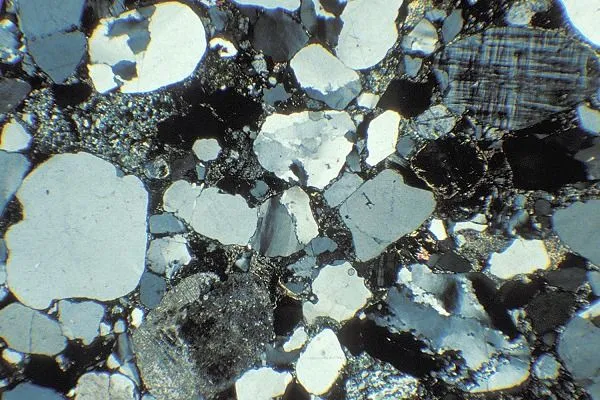
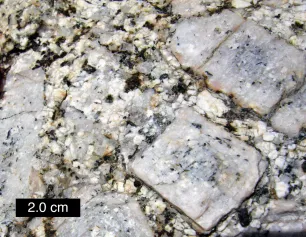
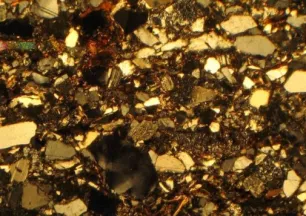
In brief, DMT is to 5-MeO-DMT as a matrix of diverse minerals is to a mono-phasic large enclave. DMT is like complex music (cf. music as an ordered phase of sound(Berezovsky 2019)) while 5-MeO-DMT is like a single mantra repeated over and over. Is this metaphor useful? It seemed to resonate with the interviewee.
Integration vs. Fragmentation
In Neural Annealing, Mike Johnson argues that what makes MDMA special for healing trauma is what at QRI we call integration:
On MDMA’s strangely powerful therapeutic effects, I’d suggest MDMA shares the ‘basic psychedelic package’ with substances like LSD and psilocybin (albeit a little weaker at common doses). Anything with this ‘baseline’ package significantly increases the energy parameter of the brain, which both allows escape from bad local minima and canalizes the brain’s core CSHWs, which both should be highly therapeutic. My intuition is MDMA may also have a particular effect on stochastic firing frequencies of neurons, and that this effect essentially acts as an emergent metronome – and this metronome will drive synchronicity between diverse brain regions. Given the presence of such a region-spanning ‘clean’ metronomic signal, brain regions that have partially ‘stopped talking to each other’ will re-establish integration, and some of this integration will persist while sober (or rather, some of the reasons for the lack of integration will have been negotiated away during the MDMA-driven integration). Plausibly this ‘emergent metronome’ effect may also underlie the particular phenomenological effects of 5-MeO-DMT as well, particularly in terms of sense of unity, high valence, and therapeutic potential. (HT to Steve Lehar for pointing at this ’nystagmus’ phenomenon as being somehow linked to MDMA’s mood-lifting effect, and to Andrés for calling my attention to Lehar’s work and suggesting 5-MeO-DMT may also share this mechanism.)
Like most other psychedelics, N,N-DMT also shares the same ‘basic psychedelic package’ and can have beneficial therapeutic effects. But it lacks this ‘special’ ability that allows arbitrary parts of your nervous system to rhythmically entrain with one another. This “emergent metronome” on MDMA and 5-MeO-DMT works as a kind of universal “vibratory currency” and results in a reduction of inner dissonance to a much greater extent than (relatively) simple “energizers” like DMT.
To Wrap Up
We hope that the above discussion has given you an idea about the difference between DMT and 5-MeO-DMT and why this matters for their therapeutic potential. The above is just the start of a deep inquiry into the topic that will certainly take many years, but we believe that it is a novel way of seeing the contrast between these two substances that may be generative for others. We also believe that it is very worth trying: nailing down this difference may be incredibly important to develop novel ways of treating mental illness. While DMT will undoubtedly continue to dazzle and amaze people curious about the state-space of consciousness, the superlative potential of 5-MeO-DMT to heal trauma puts it on a different level of importance altogether.
In the future we shall also explain why MDMA and ketamine have this potential. And ultimately, as we begin to understand what makes these substances so special, we hope to find ways of creating effective therapies from first principles. Stay tuned.
Tags
Consciousness, Psychedelic, STV